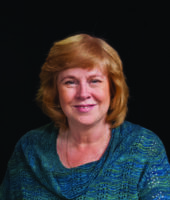What can we do? That is the one question Idaho Public Television’s Science Trek and I have spent 20 years trying to answer.

Back in 1989, the American Association for the Advancement of Sciences (AAAS) started Project 2061, an initiative to explain why it is essential for all Americans to improve their science literacy and science education in our schools. Ten years later, I was having dinner with my uncle, Dr. Richard Getzinger, who worked at AAAS. He bemoaned the last round of international test results showing American kids were still at the bottom of the rankings in math and science. “What can we do?” he asked. I didn’t know the answer, but I knew I could try something to help kids in Idaho.
With the support of my bosses at Idaho Public Television, we launched Dialogue for Kids in late 1999. The program’s mission was to engage children with science, to provide classroom resources for teachers, and to inspire students to investigate STEM careers. We started as a call-in program allowing children to ask questions of scientists. Once the World Wide Web was up and running, we quickly added a companion website. That was the beginning.
Today, Science Trek (as the project was re-titled), its website and digital productions reach hundreds of thousands of students and teachers worldwide. We no longer produce new 30-minute television programs. Instead, we produce a number of digital shorts. We moved to “digital-first” because surveys show 94 percent of classroom teachers use video as part of their lessons and younger viewers watch 2.5 times more internet video than TV. If we are to meet our mission, we need to go where our educators and students already are. We are also experimenting with 360-degree immersive videos. As teachers begin using virtual reality in their classrooms, we want to be there with high-quality content to engage students in science.
The Science Trek website currently provides content for more than 100 different science topics, all reviewed for accuracy by subject experts. Each month of the school year, we release new video shorts and several “60 Seconds With Science Trek” spots on a specific scientific topic. Videos are supported with facts, links, glossaries, reading lists, lesson plans, games and other resources designed by educational specialists including correlations to Idaho’s newly adopted science standards and the national math and literary Common Core standards.
The Science Trek website gets more than 2 million page views a school year, about a fourth of those from outside the United States. The digital shorts are downloaded from various platforms several thousand times each month. You will find material from Science Trek in textbooks in England, educational displays in the zoo in Kabul, and in several state science assessment tests, but, as hard as we have tried, we know a good share of elementary teachers in Idaho don’t even know this free resource exists. So, I’m back to the original question: What can I do?
Mother Teresa said, “If you cannot feed a hundred people, feed one.” When I started this so long ago, I wanted to feed Idaho’s students’ curiosity about our world and help educators with some of the resources they need to teach science. That’s what Science Trek has done, and, as we begin production of our 20th season, that’s what we will keep trying to do.
Students, educators and parents can find Science Trek videos on:
- IdahoPTV’s On-Demand video player
- PBS Learning Media, a free online media-on-demand service developed for PreK-12 educators
- YouTube
- Science Trek’s Facebook page for Teachers and Parents
Written by Joan Cartan-Hansen of Idaho Public Television.
